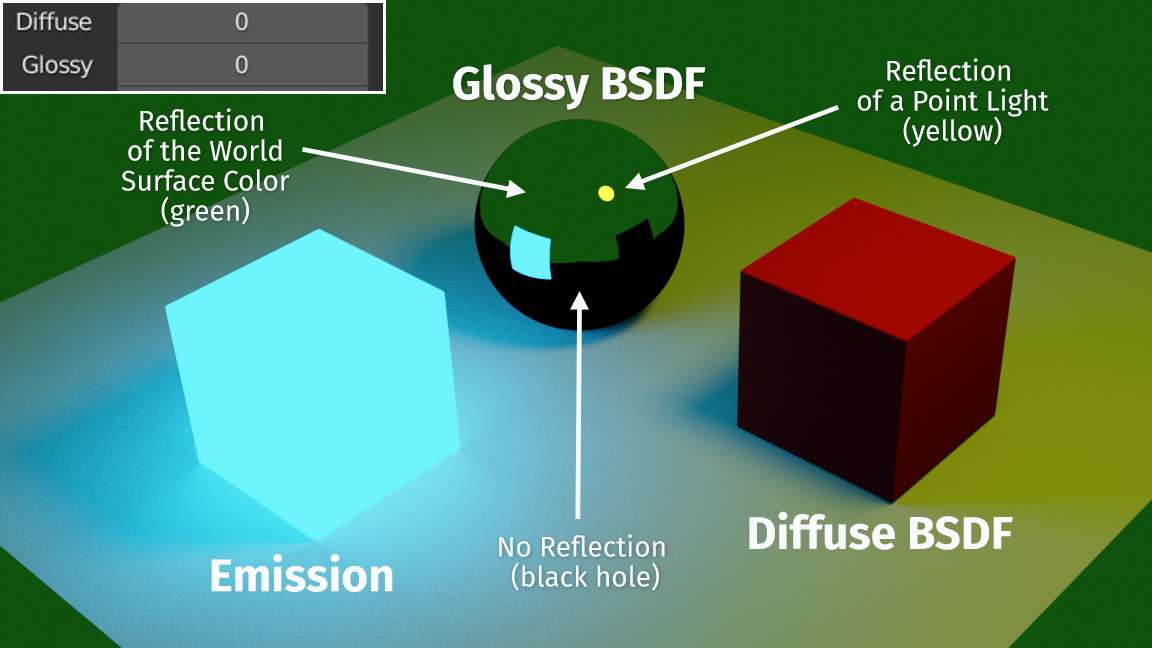@lewis2e:
I guess, what looks like a reflection of the cube in your sphere is actually a black cube-shaped hole against the reflection of the direct light sources (such as Lamps/World Surface Colour/HDR/Emission Object) that are present in your scene. In other words, it's not a reflection of the cube that you're seeing in the sphere, it's "the reflection of the direct light minus the cube".
As far as I understand, one Glossy bounce = one reflection (in a glossy surface) of the light, reflected from other surfaces (i. e. from other visible geometry, not directly from light sources). That's why you can still see the reflection of the direct light in the glossy sphere when you set Glossy to zero, but at the same time see a "black hole" instead of the cube.
See picture below. It's an Emission cube (blue), a Diffuse BSDF cube (red) being reflected in a Glossy BSDF sphere. All three are sitting on a white plane and are lit by a green World Surface and a yellow Point Lamp. The Glossy and Diffuse bounces are set to zero.

You can see that despite Glossy=0, the Emission cube, the Point light and the World Surface Color are still being reflected in the glossy sphere - because they are sources of direct light. However, the bright blue halo of the Emission cube does not reflect in the sphere, because the halo is not a direct source of light. The Diffuse cube and the plane also do not reflect in the sphere; a black hole is reflected instead of them.